
The best online fitness resource you'll ever need. We filter out the BS to ensure you meet your health and fitness goals!

The best online fitness resource you'll ever need. We filter out the BS to ensure you meet your health and fitness goals!
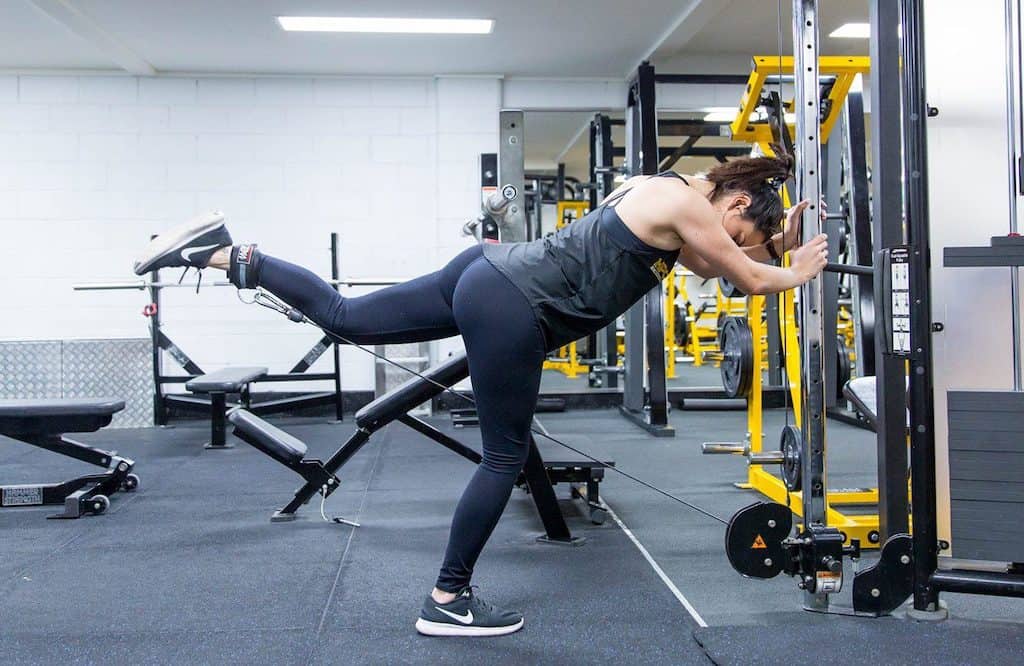
A cable glute kickback is an isolation exercise for the glutes. It is performed using a cable machine. Because it’s an isolation exercise, the target muscles work almost exclusively.
Cable glute kickbacks are great for enhancing the shape of the hip and butt that’s so aesthetically popular today. Street clothes and workout apparel alike are designed to highlight these features for both women and men.
In this write-up, we’re going to discuss the cable glute kickback and a few alternatives that deliver optimum return-on-investment for your time and effort in the gym.
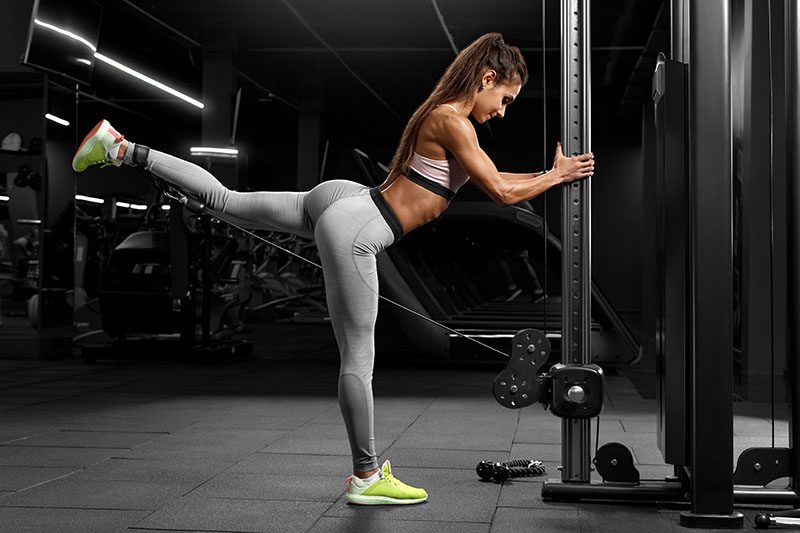
Cable glute kickback can be interchanged with “cable kickbacks” and shouldn’t be confused with cable tricep kickbacks.
In the cable glute kickback, the hip joint moves into extension behind the body. The knee shouldn’t flex.
Set the pulley low on the cable machine upright and attach an ankle strap. With the strap as low on your ankle as possible, stand a couple of steps away facing the cable machine.
While keeping the leg almost completely straight, use your hip muscles to pull back as far as possible without letting your hips roll to the side. Move the weight stack under control and don’t actually “kick”.
It’s OK to slightly bend at the knee for comfort, just don’t dynamically flex the knee during the exercise.
Concentrate on engaging the glute instead of your lower leg. Imagine that the hip is a motorized hinge and the glute is the motor.
The Cable Glute Kickback works well for glute development because of these reasons:
When performed properly, you can pummel your glutes into submission with this simple little exercise, without putting your spine at risk.
Knowing some glute anatomy and physiology helps explain why and how cable glute kickbacks work.
The glute muscles are what give the butt its shape and gravity resistance. Therefore, developing the glute muscles with cable kickbacks is a proven way to improve your backside’s aesthetic.
Glute isolation exercise is also helpful for strength and performance athletes and also facilitates activities of daily life. Strong healthy glutes enable us to be more mobile and active as we age, so you can see there’s a practical reason to work them in isolation with cable kickbacks.
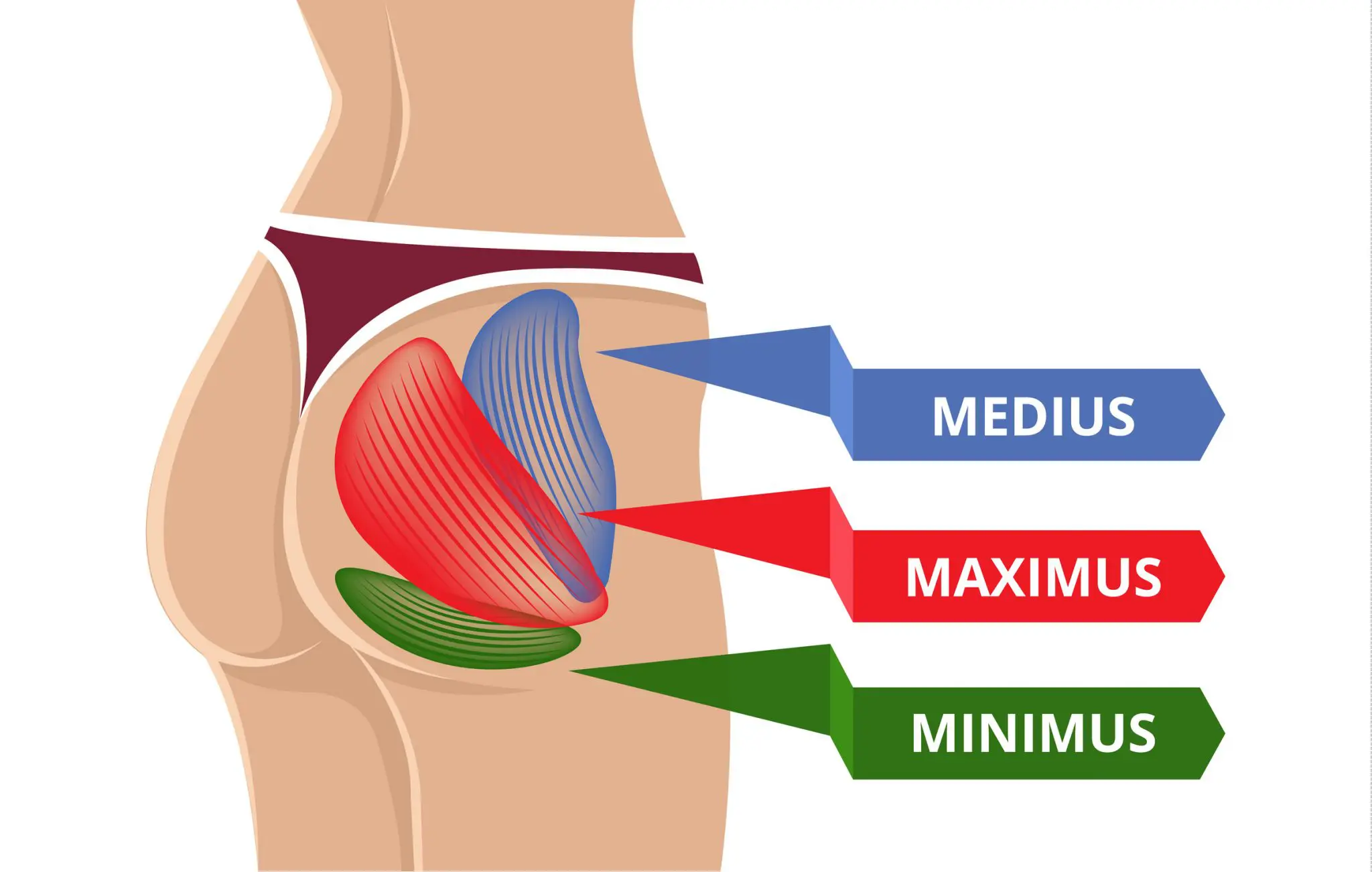
The “glutes” are made up of three muscles: gluteus minimus, gluteus medius, and of course, the gluteus maximus, which is commonly misunderstood to be the only one.
All three glutes share a common goal: moving the leg out to the side and backward. In physiological terms, the glutes abduct and externally rotate the femur. They cooperate with smaller underlying muscles to stabilize the hip and enable it to move the upper leg in any direction, clockwise or counterclockwise. Cable kickbacks primarily exercise the abduction function of the glutes, strengthening the backward movement of the leg.
The glute max and glute medius are the ones we tend to care about because they’re visible. The glute minimus lies underneath the glute max, hidden from view.
The gluteus maximus—glute max for short—contributes the most bulk to the hip. It originates along the medial border of the pelvis and sacrum (tailbone) and extends out to the side and down to its insertion on the back of the femur (thigh bone). Viewing from the back, think of it as running from 10 o’clock to 4 o’clock for the right leg, and 2 o’clock to 8 o’clock for the left.
Its role in life is to pull the leg back into extension, from front to back and slightly to the side. This becomes obvious when considering the direction of its muscle fibers (refer to the image below). This backward pulling of the leg is the exact movement we’re trying to mimic with cable kickbacks.
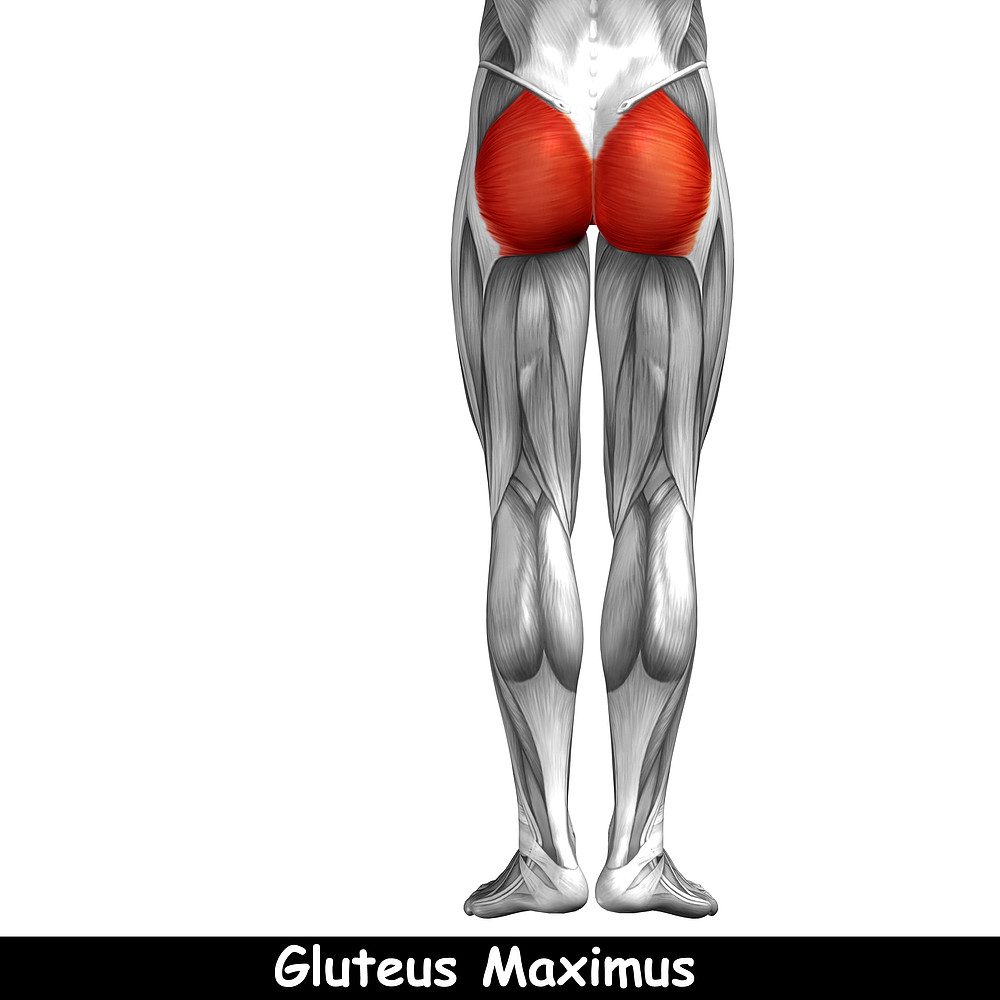
A complete range of motion goes from the thigh being lifted as high as possible to behind the body as far as possible (which isn’t very far BTW).
Glute max participates in activities of daily life such as getting up off a chair, climbing stairs, and rising from bent over to a standing position.
A developed gluteus medius adds tone and height to the hip and it’s that part of the glute complex that makes your jeans stay up without a belt.
It originates at the top back of the pelvis and runs underneath the glute max where it inserts on the top of the femur.
The glute medius externally rotates and abducts the hip and it cooperates with the glute max to swing the leg back and down. Exercises like the cable clamshell that requires the leg to move out to the side and slightly back can work the glute medius.
A complete range of motion would be for the active leg to cross the body’s midline to as far out to the ipsilateral side (same side) as possible.
Glute medius participates in activities of daily life such as getting out of a car or stepping down off a bar stool. (Beer after a workout, anyone?)
Because the glute medius and glute max have different functions, they must be isolated in different ways. (We’re not discussing glute minimus here since they are not visible muscles. Luckily, the exercises we’ll describe in a moment give glute minimus some attention.)
Unlike the glute isolating cable kickback, compound exercises don’t isolate the glutes to the extent they need to be for maximum shape and toning benefit. That’s because compound exercises recruit other hip and knee extensors. Quads, hamstrings, and adductors play too great a role in squats, deadlifts, and lunges to give the hip muscles the love they need to get shapely.
Before the squat police come knocking, this is not to say that squats, deadlifts, or lunges can’t build glutes. They do. You just need to do a lot more of them using much heavier weight to compensate for the lack of isolation.
Don’t do the cable glute kickback like a single-leg Romanian deadlift. The only body part that should move during a cable glute kickback is the active leg.
Your hips should stay perpendicular to the cable machine, with your torso facing forward throughout, without rotating at all to the side. Don’t allow your body to rotate outward (kind of like a boy dog peeing on a fire hydrant).
Squeeze the glutes to initiate the motion. It’s called a kickback, but there’s no actual kicking done.
If you’re giving the cable a jerk at the start of the motion, then you’re using your body weight to generate a moment and your glutes aren’t getting enough attention to make the exercise worthwhile.
There are two attractive, and probably superior, alternatives to the Cable Glute Kickback for glute isolation:
First, a little background, starting with a machine you seldom see gyms anymore. The multi-hip machine.
What is a multi-hip machine?
A “multi-hip” is a selectable weight machine intended to solely isolate every hip muscle there is. Simply stated, the multi-hip machine is flat-out amazing for glute work.
With one machine, the user can work hip flexors, extensors, abductors, and adductors through a crazy-wide range of motion. The machine features a roller pad attached to a height-adjustable metal arm that then operates the weight stack.
Once upon a time, when adjustable, selectable weight machines were just gaining popularity, the multi-hip machine was a common fixture in the gym.
The machine is making a comeback, thanks in large part to AAU Mr. Universe Doug Brignole, who has scienced the s*** out of muscle-building. Brignole’s explained why the multi-hip machine works better than anything for sculpting an enviable posterior. It’s not so much the machine as it is the motion it enables.
The multi-hip motion has two distinct advantages over the cable glute kickback, including pretty much every other glute exercise imaginable:
What do you do if you have no multi-hip machine in your gym? Never fear. If you’ve got a cable machine and a padded strap, you’re in luck.
Set the pulley about chest-high and clip one end of the strap to the carabiner. Raise the target leg, wrap and strap underneath the back of your thigh and just above your knee, and clip the other end to the carabiner.
Take one giant step back so that you can lean forward a bit. That will maximize your ROM. Now, pull backward.
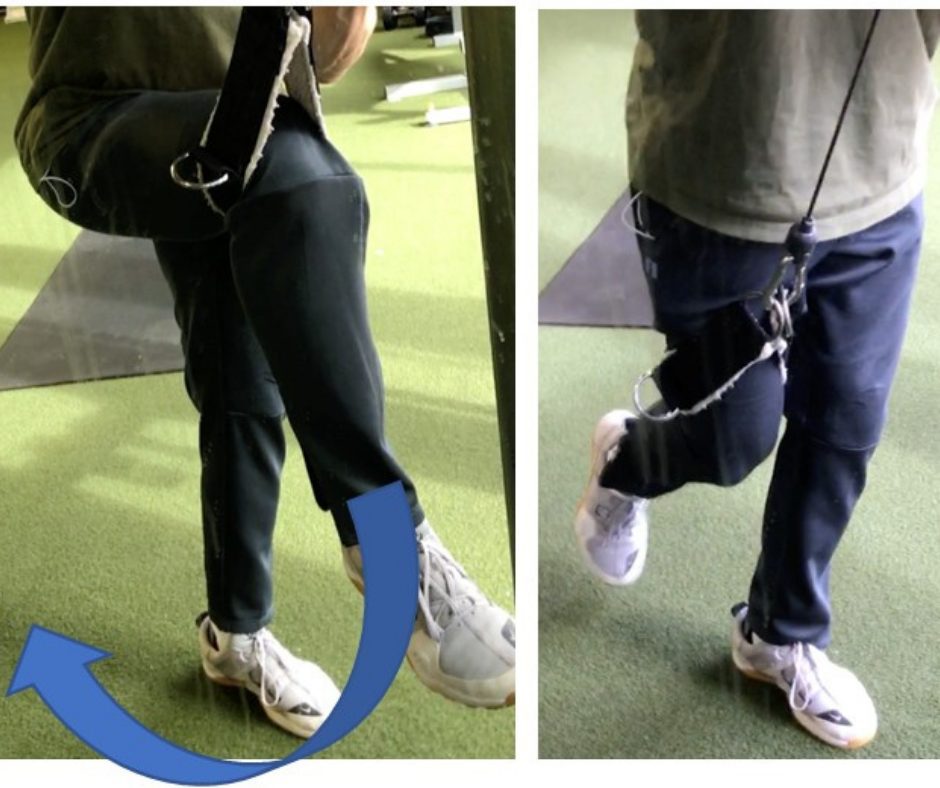
The traditional clamshell and its kissing cousin, the banded side step, uses sheet elastic or resistance bands looped around the legs near the knees. Physical therapists often prescribe the side-lying clamshell version post-operatively to patients who have undergone hip replacement surgery in order to strengthen the medial glute and glute major and recondition the surrounding support muscles.
The cable clamshell imitates the side-lying banded clamshell and also adds a hip extension, which makes it a very, very good glute activator.
To perform the cable clamshell, set up just like you would for the cable pull-down described above. Then turn to the side and take one step back. Rotate your knee out to the side, down, moving your thigh as far behind you as you’re able (which won’t be very far by design).

The cable clamshell abducts and externally rotates the hip, working both the glute medius and glute Maximus. If you had to pick one and only one glute exercise for complete booty development, this is the one.
If you’re working out at home and don’t have a cable machine, there are two pretty decent alternatives.
You can use rubber tubing equipped with carabiners and a strap to do the same glute kickback movement.
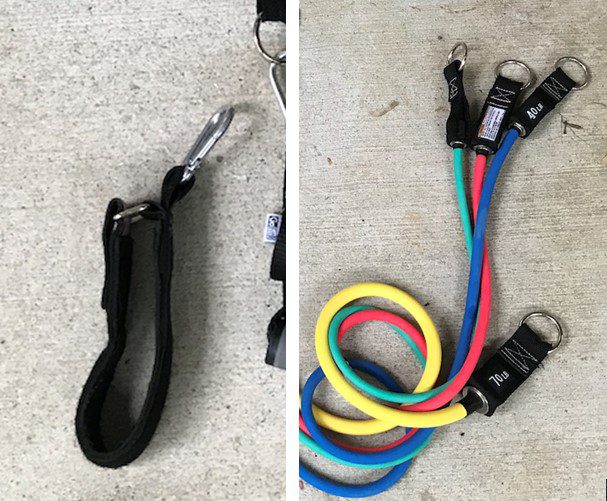
If you’ve got ankle weights handy, you can perform the same movement as the cable glute kickback. You’ll sacrifice the resistance you get at the bottom of each rep, but if you lean forward a bit more, you’ll get nearly the same ROM.
The cable donkey kick isn’t exactly a mistake. However, it’s just not a kickback.
It’s sometimes used synonymously and often confused with the cable glute kickback. Some would argue that the donkey kick actually is the cable kickback. (If it is, what’s this exercise we’re writing about here called?)
We’ve all seen the donkey kick. The exerciser puts their foot in a strap or cable handle, leans forward, bends the leg at the knee, and pushes backward.
So what’s the problem?
A cable donkey kick isn’t a glute isolation exercise because the knee flexes way too much for that to be true. The glutes attach to the femur and do not cross the knee joint, so they have no ability to articulate the knee.
Physiologically, the cable donkey kick isn’t too far removed from a forward or backward lunge.
If you do an exclusive leg day, the cable glute kickback and its alternatives can be effectively inserted into that workout. The “how” depends on your routine.
Based on what’s in your leg day routine, consider:
Put kickbacks after the heavy stuff to avoid fatiguing muscles you’ll need during those lifts. Certainly true for heavy squats or deadlifts, but exercises like lunges engage the glutes too, and form can suffer if your glutes are gassed already.
If you’re doing a traditional bodybuilding routine with a split where you’re working two or more body parts in a single workout, then cable glute kickbacks can be used as one of your isolation leg exercises.
Put them before or after leg extensions, sissy squats, or hamstring curls. If you plan on doing Romanian deadlifts (RDLs)—single or two-leg—then do the RDLs first even if you have to reduce the weight for the kickbacks.
The glutes are among the body’s largest skeletal muscles, so it’s perfectly logical to work the glutes all on their own, exclusive of a complete leg day. The cable glute kickback will work glute max, so consider adding cable adduction or cable clamshell to give the glute medius some attention too.
Cable kickbacks make an excellent accessory exercise for lifters training for strength or power. However, put them at the tail end of your routine if you’re planning on heavy squats, deadlifts, lunges, or full ROM Olympic lifts.
Fatiguing the glutes in advance of these lifts is inviting injury. Because as your glutes fatigue, you’ll lose that stable base at the bottom of the heavy-lift, putting your spine at risk.
The good, old-fashioned high-to-low rep method works really well with cable kickbacks, whether in isolation, body part routines, or as supporting exercises in strength and power routines.
1 set X 40-50 reps
1 set X 30 reps
1 set X 20 reps
1 set X 15 reps
1-2 sets X 8-12 reps
Straight sets are also effective:
1-2 warm-up sets X high reps
3-4 sets X 8-12 reps
Given today’s aesthetic appeal of a well-developed backside, glute isolation is essential and mandatory for modern physique development. The cable glute kickback and its alternatives—the cable glute pull-down and the cable clamshell—isolate the glutes and create a toned shape.
Isolation exercises work best for individual body part development. Most glute exercises are compound, which involve other muscles, so the glutes regrettably seldom get alone-time in the gym.
Optimize your gym time, pour on glute isolation, and pump up those hips with cable glute kickbacks, cable glute pull-downs, or cable clamshells.